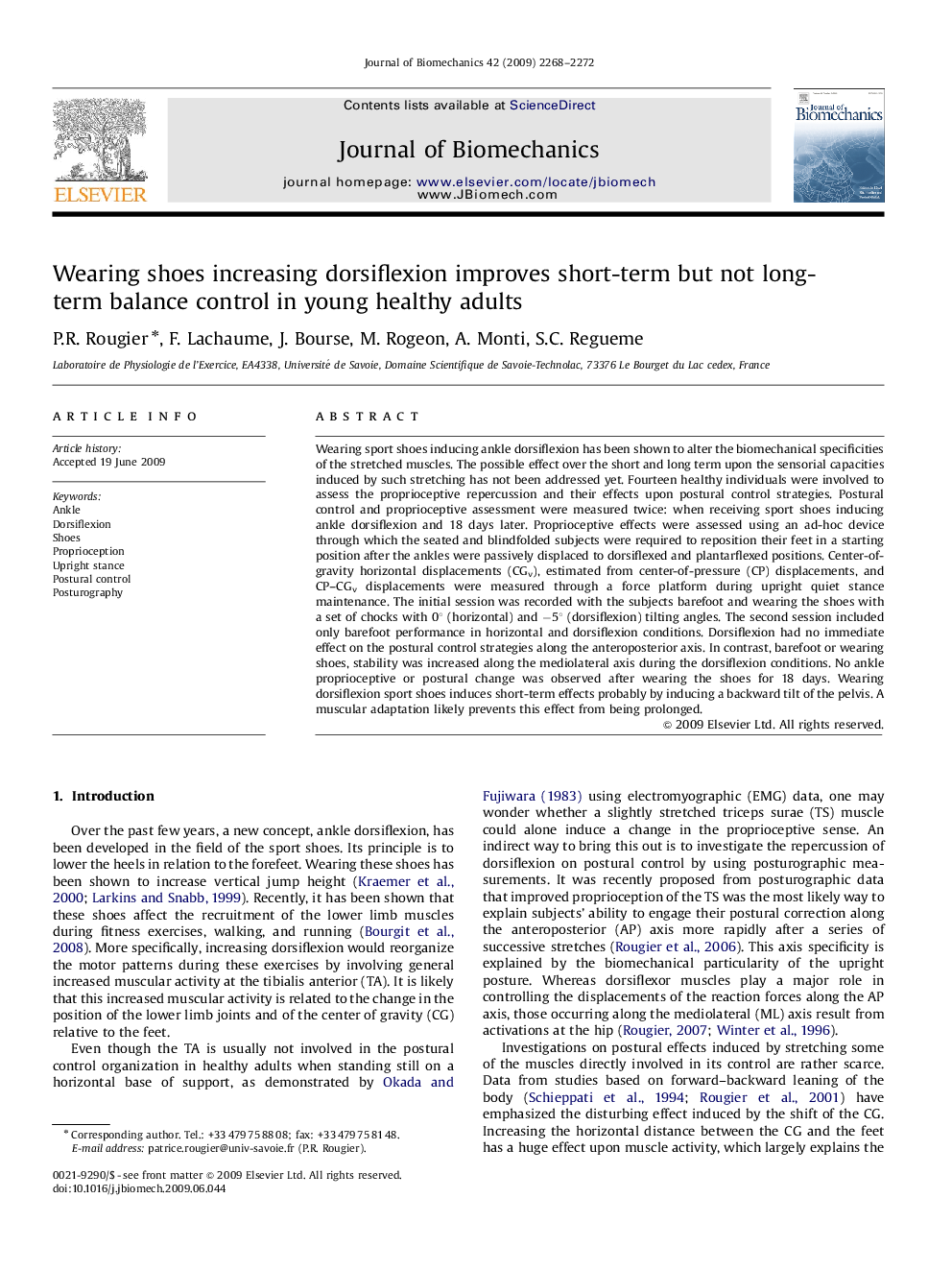| Article ID | Journal | Published Year | Pages | File Type |
|---|---|---|---|---|
| 10433516 | Journal of Biomechanics | 2009 | 5 Pages |
Abstract
Wearing sport shoes inducing ankle dorsiflexion has been shown to alter the biomechanical specificities of the stretched muscles. The possible effect over the short and long term upon the sensorial capacities induced by such stretching has not been addressed yet. Fourteen healthy individuals were involved to assess the proprioceptive repercussion and their effects upon postural control strategies. Postural control and proprioceptive assessment were measured twice: when receiving sport shoes inducing ankle dorsiflexion and 18 days later. Proprioceptive effects were assessed using an ad-hoc device through which the seated and blindfolded subjects were required to reposition their feet in a starting position after the ankles were passively displaced to dorsiflexed and plantarflexed positions. Center-of-gravity horizontal displacements (CGv), estimated from center-of-pressure (CP) displacements, and CP-CGv displacements were measured through a force platform during upright quiet stance maintenance. The initial session was recorded with the subjects barefoot and wearing the shoes with a set of chocks with 0° (horizontal) and â5° (dorsiflexion) tilting angles. The second session included only barefoot performance in horizontal and dorsiflexion conditions. Dorsiflexion had no immediate effect on the postural control strategies along the anteroposterior axis. In contrast, barefoot or wearing shoes, stability was increased along the mediolateral axis during the dorsiflexion conditions. No ankle proprioceptive or postural change was observed after wearing the shoes for 18 days. Wearing dorsiflexion sport shoes induces short-term effects probably by inducing a backward tilt of the pelvis. A muscular adaptation likely prevents this effect from being prolonged.
Related Topics
Physical Sciences and Engineering
Engineering
Biomedical Engineering
Authors
P.R. Rougier, F. Lachaume, J. Bourse, M. Rogeon, A. Monti, S.C. Regueme,
